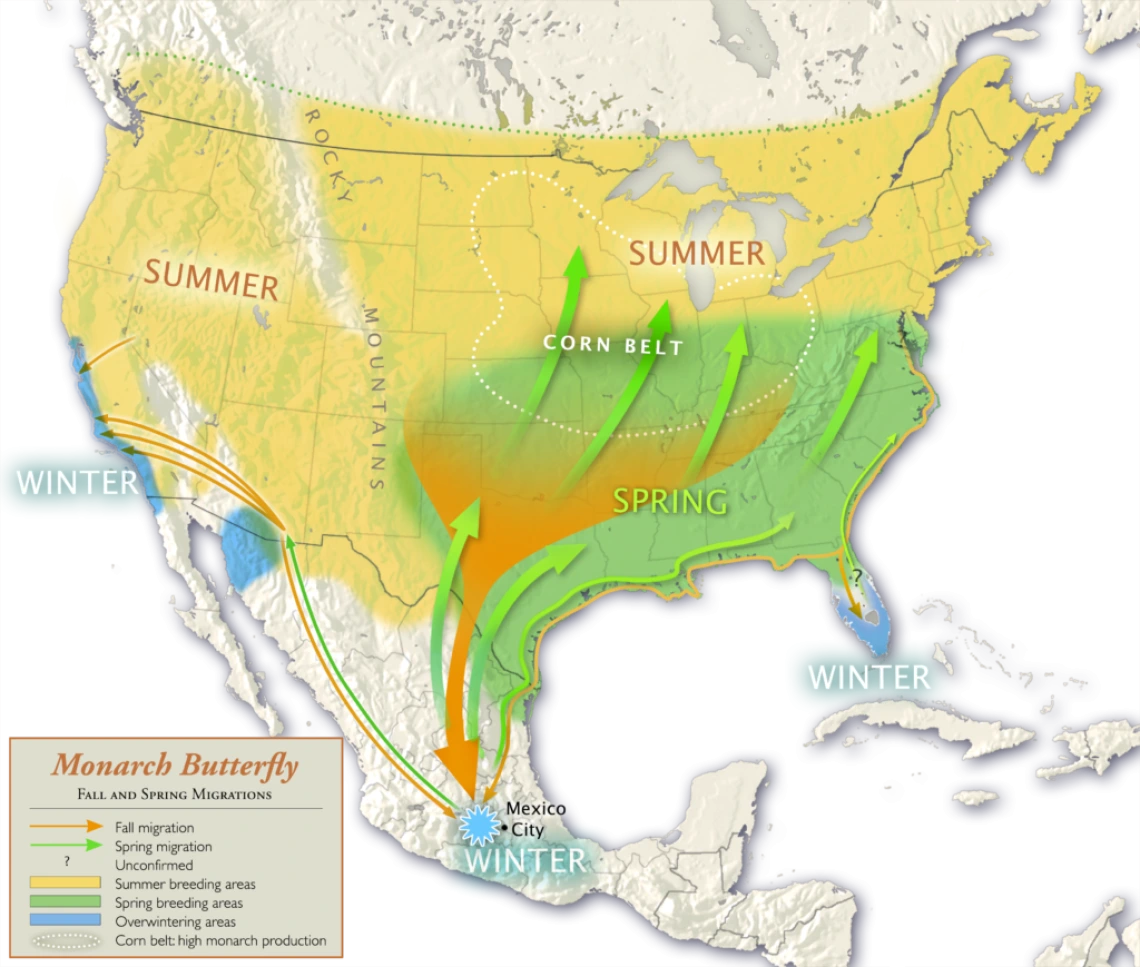The migration of the monarch butterfly is often described as one of the most spectacular natural phenomena in the world.

Among the forest communities of central Mexico, monarchs are believed to carry the soul of a relative or friend who, for one night, on Dia de Muertos, returns to the world of the living.
The 3000-mile migration route crosses three international borders, extending from overwintering areas in central Mexico to summer breeding in the United States and as far north as southern Canada. During this journey the butterflies may go through five generations, yet the offspring know to return to their winter refuge in the oyamel fir forests of Mexico where they cover the trees like flickering orange flames. Monarchs don’t pollinate agricultural crops or provide pest-control, and they have little value as a collectible specimen. Still, monarchs have a high perceived worth throughout North America. They carry deep spiritual importance for Indigenous people in central Mexico, and surveys in the US show most citizens support monarch conservation.
Unfortunately, intensive agriculture in the US and Canada, disease, and climate change have resulted in monarch population declines of up to 80% in the past 20 years. Some estimates suggest the species’ magnificent migrations may not last another decade unless drastic steps are taken to reverse the rate of habitat loss. To turn this dire situation around, it’s not enough to study the complex ecology of monarch migrations. A deeper understanding of the species’ cultural and economic value to humans will be critically important for its long-term conservation and the sustainable and equitable governance of this telecoupled system.

Monarch butterfly migration northward in the Spring and back to their winter refuge in the Fall.
Our spatial subsidies work uses the telecoupling concept to provide some first steps in this deeper understanding. Identification of habitat areas throughout the species’ range, analysis of ecotourism values and public willingness to pay for monarch conservation, allows us to identify sending and receiving areas for monarch ecosystem services. Our work indicates that monarch winter habitat in central Mexico subsidizes the cultural benefits experienced by people in the US and Canada from the species’ presence.
